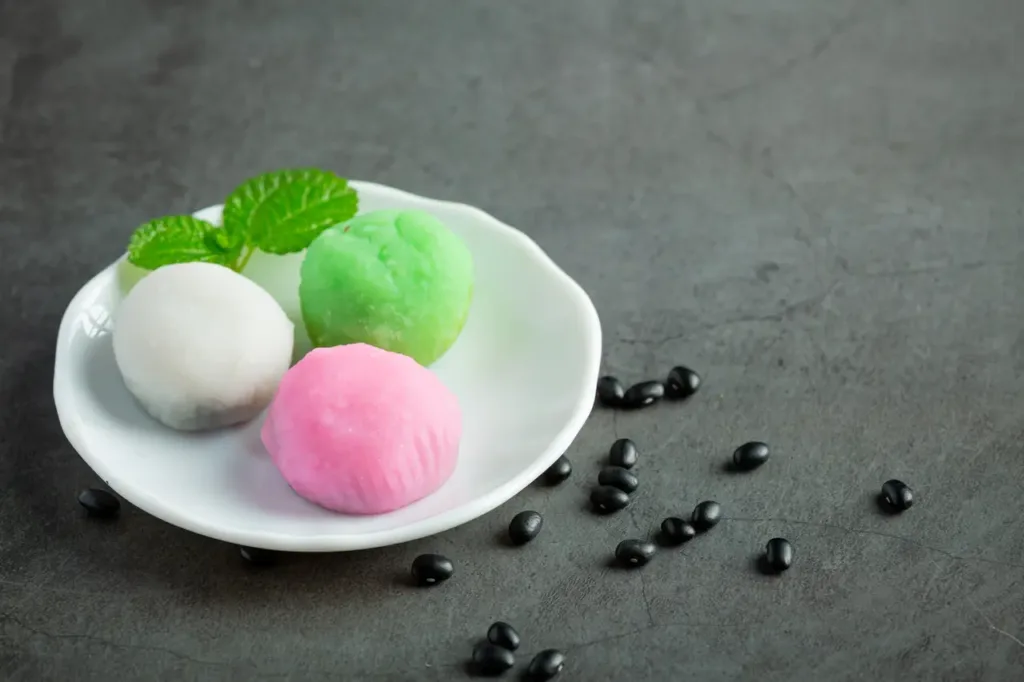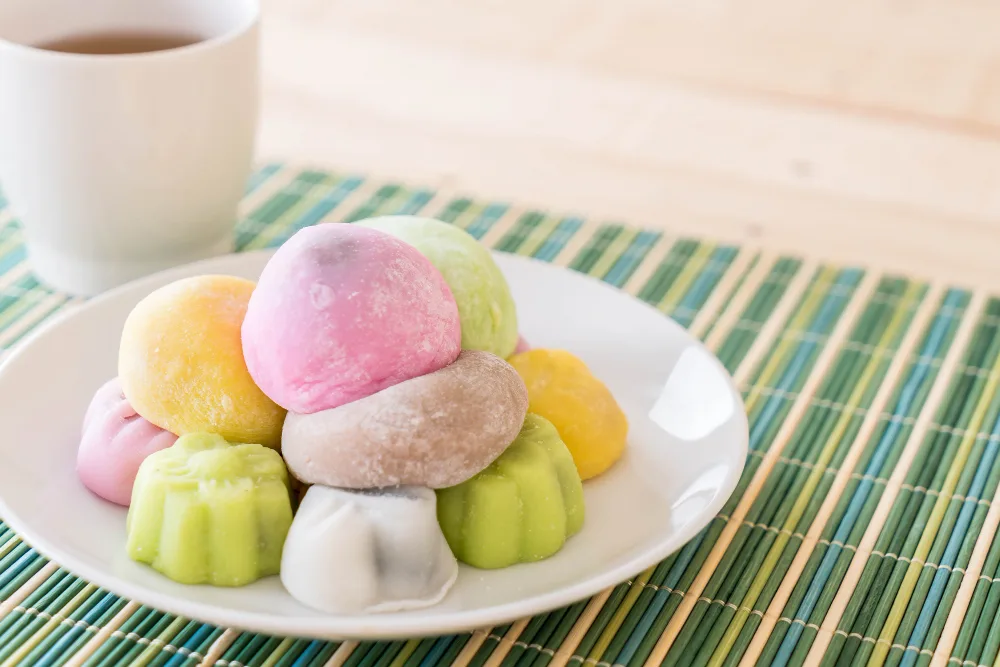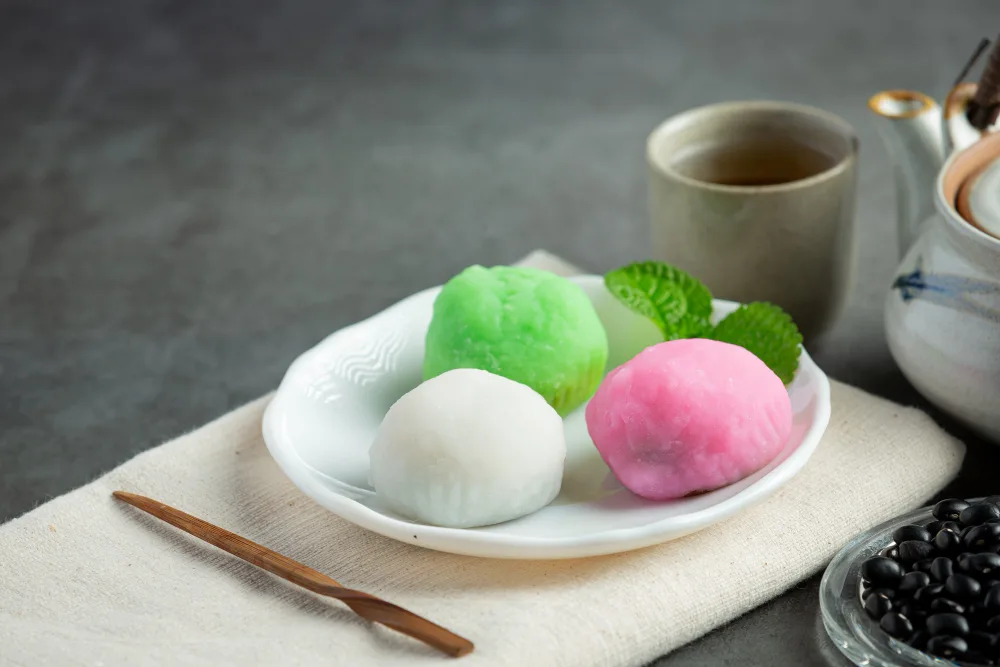Can dogs eat mochi? As a pet owner, you may be tempted to share your favorite chewy and sweet dessert with your furry friend. However, before you give your dog a bite of mochi, it’s important to know that it may not be safe for them to eat.
Mochi, a traditional Japanese rice cake dessert made with glutinous rice flour, has a high sugar content that can be harmful to dogs. Additionally, dogs are not able to digest glutinous rice flour properly, which can put stress on their organs and lead to gas, bloating, breathing problems, and even pancreatic inflammation.
Moreover, as many dogs tend to swallow their food without properly chewing, mochi can also pose a choking hazard.
So, as much as you may want to share your love for mochi with your furry companion, it’s best to avoid feeding it to them. In this article, we’ll dive deeper into the reasons why mochi is not safe for dogs and explore 10 surprising facts that every pet owner should know. Keep reading to ensure your pet’s health and safety!
Table of Contents
Why Mochi Can Spell Disaster for Your Dog’s Health?
Mochi may seem like a harmless treat to share with your furry friend, but it can actually be bad for dogs. The sticky, dense texture of mochi can easily become a choking hazard, especially for puppies. Moreover, dogs are unable to digest the glutinous rice flour used in making mochi, which can lead to bloating and stress in their internal organs.
Additionally, regular consumption of mochi can result in breathing difficulties and pancreatic inflammation, making it a dangerous food item for dogs. Therefore, it is important to be mindful of the ingredients used in making mochi and to avoid feeding it to your furry friend altogether. In the following article, we’ll explore 10 surprising reasons why mochi is not safe for dogs to eat, so keep reading to ensure the health and safety of your pet.

What is Mochi? A Brief History
Mochi is a traditional Japanese dessert that has been around for centuries. It is a small, round ball-shaped rice cake that is chewy, sweet, and sticky. Although it is now enjoyed by people of different backgrounds all over the world, Mochi was initially a sacred food that held great significance during the Japanese New Year. Ancient Japanese people would consume Mochi and pray for good health and prosperity.
Over time, the tradition of making and eating Mochi has become a popular practice for many people, and it is now consumed throughout the year. This sweet treat is often served with green tea and can be enjoyed in different flavors and styles. However, as much as people love Mochi, it is crucial to note that it can be harmful to dogs. While it may seem harmless to give your furry friend a small bite of this dessert, it is best to avoid it altogether due to its potential health risks to dogs.
Various Kinds of Mochi

Mochi is a traditional Japanese treat that comes in various types and flavours. Here are some of the different types of mochi:
-
Daifuki: Daifuki is the most popular type of mochi. It’s a small, round-shaped mochi filled with sweetened bean paste, typically made of red or white beans.
-
Sakura: Sakura mochi has a lumpier texture than daifuki because it contains some whole rice grains. It’s also shaped into a round ball and is served with a salted sakura leaf.
-
Warabi: Warabi mochi is made from warabi starch, which comes from a type of fern. This mochi has a translucent appearance and a soft, jelly-like texture.
-
Hanabira: Hanabira mochi is rolled out into a small circle, folded in half, and served with white bean paste, miso, and a candied stick of gobo burdock root.
-
Hishimochi: Hishimochi is a colourfully layered mochi treat that’s cut into a diamond shape. It’s believed to symbolize good health, long life, fertility, and new life.
-
Botamochi or Ohagi: Botamochi or Ohagi is another kind of mochi rice ball that contains both chunky and smooth red bean paste inside.
-
Kirimochi or Marumochi: Kirimochi is unsweetened mochi that’s formed into rectangular blocks and packaged into a hard and dried form, which can be used later for cooking.
-
Kusamochi: Kusamochi is green in colour, filled with red bean paste, and shaped like a flower. It’s made from a mixture of sticky rice and yomogi, a Japanese mugwort plant.
-
Kuzumochi: Kuzumochi is a popular summertime treat that’s made from the starch of the Japanese arrowroot plant. It’s clear in color and mixed with whole red beans or topped with sweetened red bean paste.
Mochi comes in a variety of shapes, textures, and flavours, making it a popular treat in Japan and around the world. However, it’s important to remember that mochi can be dangerous for dogs to eat, so it’s best to keep it away from your furry friend.
The Ingredients of Mochi: What Makes It Dangerous for Dogs to Eat?
Mochi is a famous Japanese treat that isn’t ok for canines to eat. Despite the fact that mochi balls can be a delicious treat for people, the ingredients used to create them can be destructive to canines. We should investigate the ingredients that make mochi risky for canines to eat.
Sweetened Red Bean Paste
Sweetened red bean paste is made utilizing sugar, salt, and red bean. It is a typical ingredient used to fill mochi balls. While canines can eat plain-cooked red beans, sweetened red bean paste isn’t suggested for them. Sugar and salt can create dental issues, diabetes, and pancreatitis in canines. It is ideal to try not to give your canine any food that contains these ingredients.
Sweet Rice Flour
Sweet rice flour is produced using glutinous rice and is an essential ingredient used to make mochi. While sweet rice flour isn’t poisonous to canines, it ought to be given with some restraint as it tends to be a stifling peril. Likewise, sweet rice flour has a high starch content compared to different kinds of rice. Offering a limited quantity of sweet rice flour periodically won’t hurt your canine, yet it ought not be offered routinely. It is smarter to offer flours that are more secure for canines, for example, almond flour, coconut flour, quinoa flour, oat flour, and so on.
Green Tea Powder
Green tea powder is one more fundamental ingredient used to make mochi balls. In any case, it is pivotal to remember that not all green tea powder is matcha. Green tea contains caffeine, and green tea powder contains more caffeine than customary tea packs or free tea leaves. Adding green tea powder to mochi balls for flavour can be hazardous for canines. Caffeine admission in canines can cause unsettling, hyperactivity, and gasping. Thusly, it is ideal to try not to offer green tea powder to your canine companion.
Cornstarch and Sugar
Cornstarch is utilized to forestall mochi balls from adhering to one another, and sugar is added to give the balls a sweet flavour. While cornstarch isn’t unsafe to canines, excessive sugar utilization can prompt weight gain, spewing, and diabetes. Mochi balls contain an exorbitant measure of sugar to make them sweet, making them not suggested for canines.
Mochi balls might be scrumptious however, the ingredients used to create them can be risky for canines. It is fundamental to try not to offer your shaggy companion any food that contains sugar, salt, or caffeine. You can offer your canine more secure choices like natively constructed canine treats made with canine well-disposed ingredients. Continuously talk with your veterinarian in the event that you are uncertain about what food sources are ok for your canine to eat.

What Is Mochi Ice Cream?
Mochi ice cream is a modern twist on traditional mochi that originated in Japan. Unlike traditional mochi, which is filled with sweetened bean paste, mochi ice cream is filled with a sorbet-style ice cream that comes in a variety of flavors. The concept was first created in the 1980s by Frances Hashimoto, a resident of Little Tokyo, California, to promote Japanese culture in the area.
Since then, mochi ice cream has become increasingly popular throughout America, particularly at Asian fusion restaurants. It is available in a range of flavors, including green tea, mango, strawberry, and vanilla bean. Customers can enjoy the unique combination of soft and chewy mochi dough with the cold and creamy ice cream filling. If you’re a business owner, offering mochi ice cream on your dessert menu is a great way to provide your customers with a unique and delicious treat. However, it is important to note that mochi ice cream is not safe for dogs to eat due to its high sugar content and potential choking hazard.
Can dogs eat mochi ice cream?
It’s best to avoid feeding mochi ice cream to your furry friends. This sweet treat contains high levels of sugar that can be dangerous for dogs.
The ingredients used in making mochi ice cream are similar to regular mochi, such as rice dough and sugar, making it a threat to your pup’s health. Keep your dog safe and choose a different treat option.
Healthy Treats for Dogs: Safe and Delicious Alternatives to Mochi
f you’re looking for healthy and safe alternatives to Mochi for your furry friend, there are plenty of options available. Some great alternatives include dog-safe fruits such as apples, bananas, and blueberries, which are high in vitamins and antioxidants. You can also try giving your pup some lean protein such as chicken or turkey, which can help to support their muscle development.
For a tasty and healthy treat, try making your own dog treats at home. You can use ingredients like pumpkin puree, peanut butter, and oats to make delicious treats that are packed with nutrition and safe for dogs to consume. Just be sure to avoid using any ingredients that are toxic to dogs, such as chocolate, raisins, or grapes.
With so many great options available, there’s no need to give your dog Mochi, which can be harmful to their health. By providing your furry friend with healthy and safe alternatives, you can help to ensure that they stay happy, healthy, and well-nourished.
Let’s explore some of these options that your dog will surely love.
What to Do if Your Dog Has Eaten Mochi?
In case your furry friend has eaten some Mochi, don’t panic. First, check the ingredients list and see if there are any potentially harmful ingredients like green tea powder or red bean paste. If you suspect any issues, contact your veterinarian immediately for advice.
If the sugar content is the only concern, your dog will most likely recover from the upset stomach in due time. However, monitor your dog’s behavior closely and consult your veterinarian if any adverse symptoms persist.

So, can dogs eat Mochi?
#Dogs should not eat #Mochi! The sweet rice dough and high sugar content can lead to choking hazards and health problems. If your dog accidentally eats it, consult your vet. Keep your furry friend safe with healthy treats! #doghealth #petcare #safetytips 🐶🚫🍡
Dr. Chandrika
Tweet
In conclusion, it is not recommended to feed Mochi to your furry friend. Mochi is made of sweet rice flour and dough, which can be a choking hazard for dogs due to its sticky texture. Additionally, Mochi is very sweet and can cause health issues if consumed in excess. If your dog has accidentally eaten a small amount of Mochi, monitor their behavior and seek veterinary advice if necessary.
While some ingredients in Mochi, such as green tea powder or red bean paste, may be harmless for dogs, it is best to err on the side of caution and avoid feeding them this dessert altogether. Instead, opt for healthy and safe treats for your dog, such as fresh fruits, vegetables, and lean proteins.
Remember, a dog’s digestive system is different from humans, and what may be safe for us to eat may not be safe for our pets. As responsible pet owners, it is important to educate ourselves on what foods are safe for our dogs to eat and to always prioritize their health and well-being.


